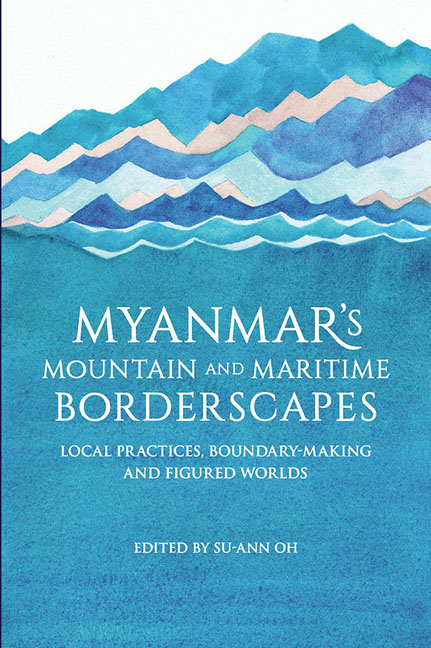Book contents
- Frontmatter
- Contents
- List of Tables
- List of Figures
- Acknowledgements
- Notes on Language, Terminology and Geographical Names
- Contributors
- Abbreviations
- 1 Introduction
- I Overview of Myanmar's Mountain and Maritime Borderscapes
- II Territorial Claims and Imagined Boundaries
- III Social Organization and Border Economies
- 7 The Culture and Landscape of the Humanitarian Economy among the Karen (Kayin) in the Borderland of Southeast Myanmar and Northwest Thailand
- 8 Navigating Learning, Employment and Economies in the Mae Sot-Myawaddy Borderland
- IV Mobile Practices and Moving Borders
- V Identity Construction and the Politics of Belonging
- VI Institutionalized Identity and Border Practices
- Index
8 - Navigating Learning, Employment and Economies in the Mae Sot-Myawaddy Borderland
from III - Social Organization and Border Economies
Published online by Cambridge University Press: 06 June 2017
- Frontmatter
- Contents
- List of Tables
- List of Figures
- Acknowledgements
- Notes on Language, Terminology and Geographical Names
- Contributors
- Abbreviations
- 1 Introduction
- I Overview of Myanmar's Mountain and Maritime Borderscapes
- II Territorial Claims and Imagined Boundaries
- III Social Organization and Border Economies
- 7 The Culture and Landscape of the Humanitarian Economy among the Karen (Kayin) in the Borderland of Southeast Myanmar and Northwest Thailand
- 8 Navigating Learning, Employment and Economies in the Mae Sot-Myawaddy Borderland
- IV Mobile Practices and Moving Borders
- V Identity Construction and the Politics of Belonging
- VI Institutionalized Identity and Border Practices
- Index
Summary
The Mae Sot-Myawaddy borderland is teeming with peoples of varying ethnicities, social classes and qualifications working and studying in a myriad of organizations. The diversity of motivations, trajectories and institutions is at once overwhelming and fascinating. This chapter attempts to make sense of this complexity by focusing on the learning and employment adventures of Miriam, a young Burmese woman living in Mae Sot. Although Miriam does not embody an ideal-type, nor does her story represent the experiences of the diverse individuals living on this border, her narrative provides a fascinating account of and the way in which wider structures — both material and intangible — shape an individual life.
Essentially, this chapter asserts that the lives of Burmese migrants in the Mae Sot–Myawaddy border area are largely affected by two economies — the neoliberal and the humanitarian (see Horstmann, this volume) — operating under and outside the jurisdiction of the central Thai and Burmese states, and local (formal and informal) authorities on both sides of the border. While I am aware of other economies operating in this region — the war economy for example, I focus on these two economies because there are a range of learning and employment institutions that make up and support them. The neoliberal market economy as applied to this region brings to mind border trade, garment factories and special economic zones. This is where Miriam's story begins. As we follow her journey into and out of a garment factory and then into various community and non-governmental organizations that make up the humanitarian economy, we discover the workings of these two economies.
By linking individual pathways and institutions to employment in distinct sectors, this chapter identifies the ideologies, beliefs and customs being reproduced and that form the socio-cultural base of the humanitarian industry in this borderland. It also shows that educational institutions are not uniform across the board: some provide training in the skills and attitudes suitable for joining the capitalist underclass in Thailand, others provide training in competencies for employment in community based and non-governmental organizations in the humanitarian sector. While the latter is a step up from precarious factory work, its dependence on donors subjects it to funding fads and donors’ whims.
- Type
- Chapter
- Information
- Myanmar's Mountain and Maritime BorderscapesLocal Practices, Boundary-Making and Figured Worlds, pp. 191 - 212Publisher: ISEAS–Yusof Ishak InstitutePrint publication year: 2016

